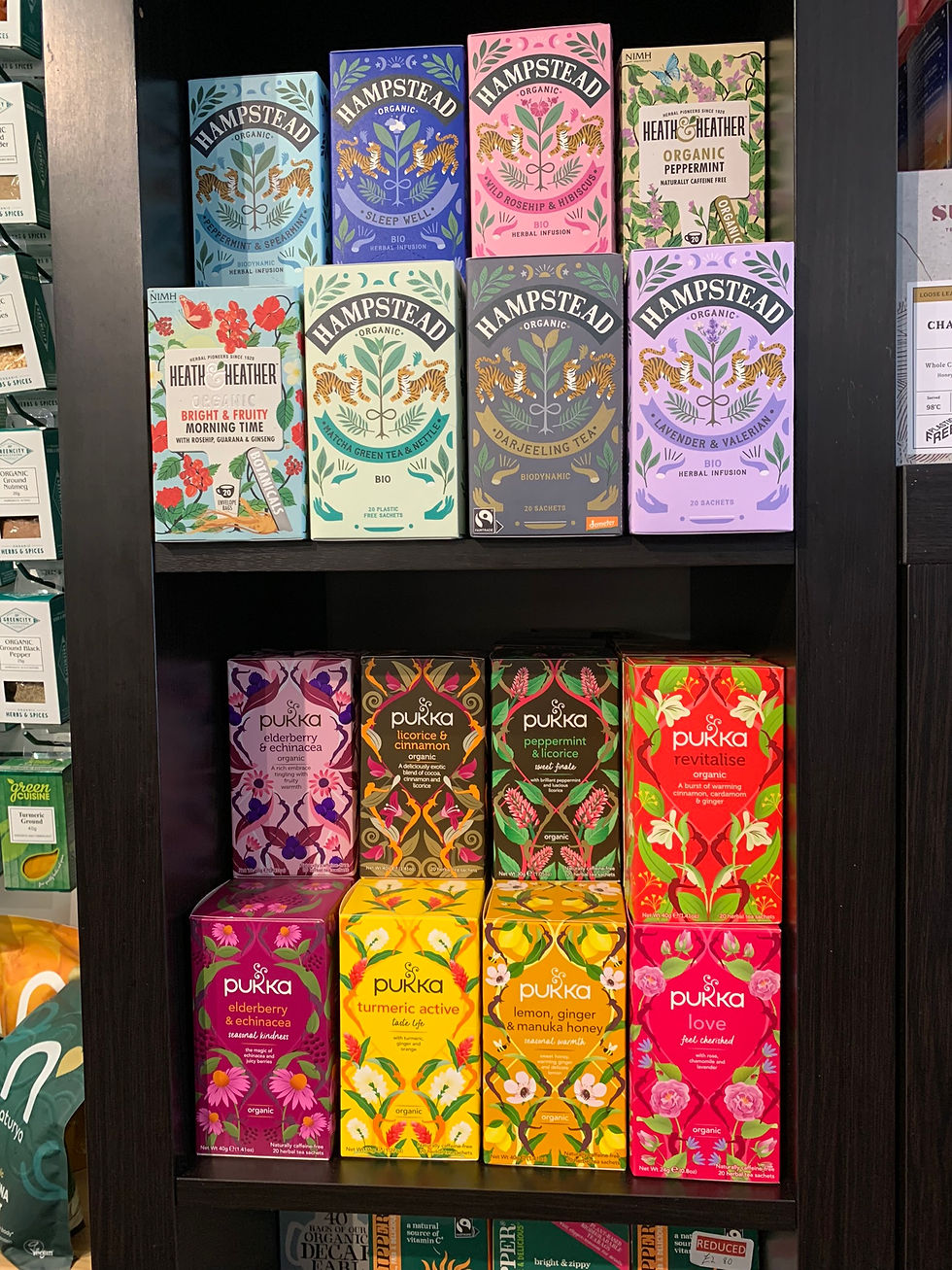The Power of Pack Design
- Charlie

- May 23, 2024
- 3 min read
Updated: Jun 5
Packaging design is an important touch point that is imperative to get right. Studies show that a consumer will typically read an average of seven words on each supermarket visit. They will spend seconds, if not micro seconds, browsing a category whilst shopping on autopilot; which is why disrupting visual cues has to be a priority!
I have seen the impact that changing a pack design can have on private label ranges, with sales growth doubling. Conversely, I have seen changes to pack designs have a very damaging impact sales on figures. It's something that can be ill afforded to get wrong.

Colour and shape
Whilst looking at a fixture, shoppers will see colour and shape before they see anything else. They will subconsciously register seeing different items because the shapes and colours are different. Looking at the example of the herbal teas in the above image; had all the Pukka products been orange but different flavours, you would quickly see four of what looks like the same flavoured tea. By designing the packaging in different colours, the shopper can immediately see that there are four different flavours to browse and select. The same would also apply if they were different shapes. Your brain registers the shapes and colours before even reading a word or acknowledging and recognising a familiar brand logo.
On shelf differentiation
Getting your own designs differentiated is a great place to start but what about the other products that surround you? How will your pack look different and establish it's own unique positioning within that space? If you are looking at a private label, there may also be a need to fit in with existing guidelines.

Messaging hierarchy
When shoppers do take the time to absorb some of the wording from the front and side of your packaging, which words and in what order do they need to read them, to remain engaged enough to then purchase your product? What is the key information that shoppers need to know when choosing your product? Brand, recipe, protein, dietary needs (free from or vegan), number of servings, nutritional benefits and recyclability. The list goes on and we are beginning to notice more sustainability messages on packs and soon we will see eco labelling on packs. With all of this information what do they need to see and in which order? Brand > Flavour > Size? What do shoppers look for in your category? Brand > Flavour > Protein > Size? Protein > Flavour > Size? Definitive answers to these questions can be found through research and mapping decision trees. Speaking with shoppers, mapping a shopper journey methodically and acting out the process yourself can be great DIY options, if there is no budget to stretch to bespoke research.
Shopper journey
Have you mapped your shopper journey? What process are shoppers experiencing on their journey to purchasing your product? How does the packaging feature in this process? One of the key elements will be determining if your product is a planned or impulse purchase. Going through Awareness > Consideration > Evaluation > Purchase > Advocacy, what happens at each stage of this journey? What can your packaging do to aid and enhance these steps?

Bringing the occasion to life
Is it really obvious what your product is? If it makes up part of a meal, does your packaging show the rest of the meal? Do people know what to do with your product?
So what should you do?
I would argue packaging is the most critical touchpoint to get right. You need to engage an expert in food and drink pack design to perfect it. I highly recommend using Packaging Design | Iamone | UK, who are experts in this field.
Research and study the other products within the category, to ensure your product is clearly differentiated on the shelf and consider the messaging hierarchy.
Map your customer journey to consider what your packaging needs to deliver at the relevant and different stages.
During my career, I have worked through many Private Label pack redesigns in Ready to Cook and Chilled Meals. If you would like support on how to approach, engage with and influence this process feel free to get in touch or book a Power Hour.




Comments